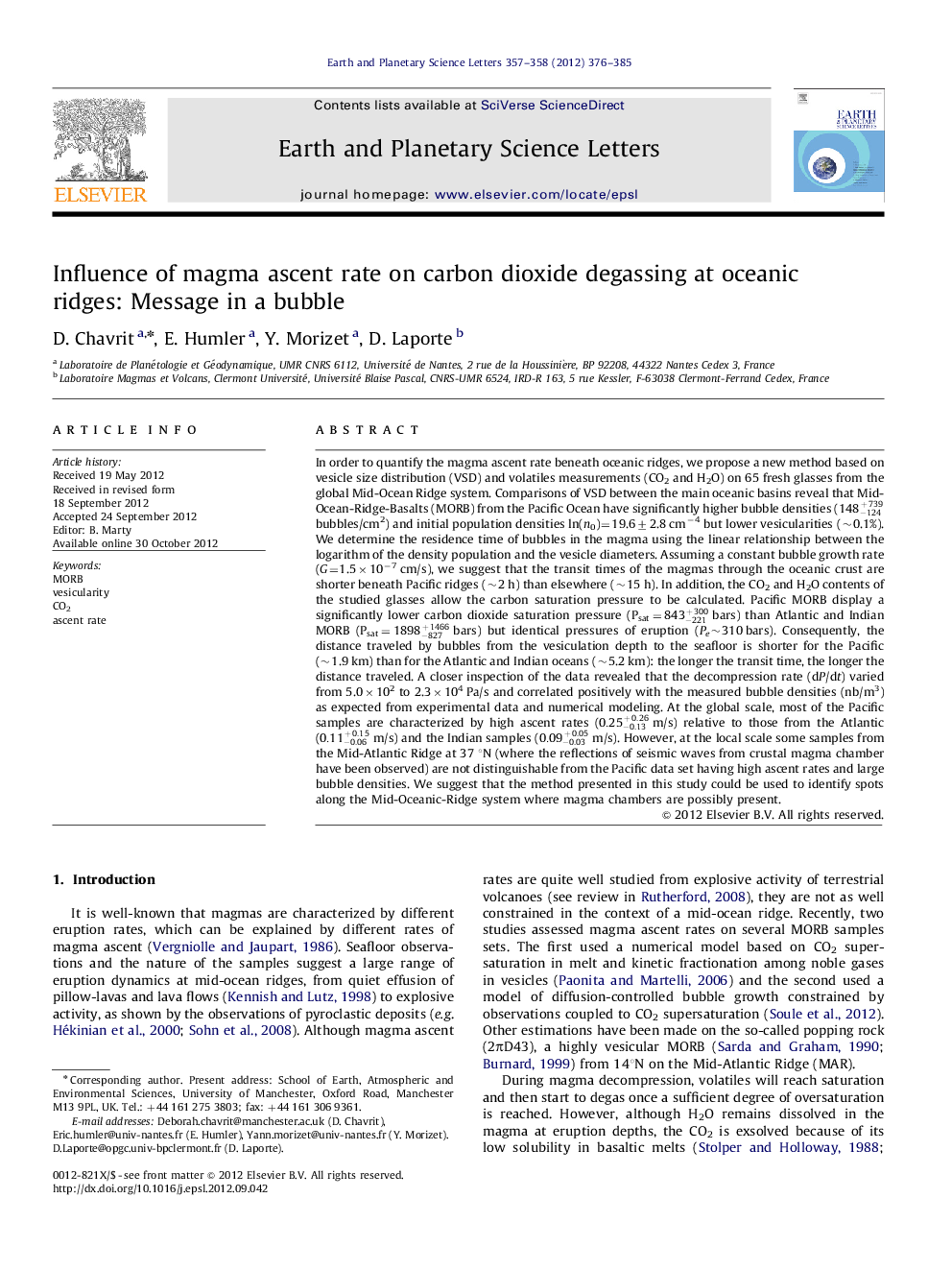| کد مقاله | کد نشریه | سال انتشار | مقاله انگلیسی | نسخه تمام متن |
|---|---|---|---|---|
| 4677309 | 1634794 | 2012 | 10 صفحه PDF | دانلود رایگان |

In order to quantify the magma ascent rate beneath oceanic ridges, we propose a new method based on vesicle size distribution (VSD) and volatiles measurements (CO2 and H2O) on 65 fresh glasses from the global Mid-Ocean Ridge system. Comparisons of VSD between the main oceanic basins reveal that Mid-Ocean-Ridge-Basalts (MORB) from the Pacific Ocean have significantly higher bubble densities (148−124+739 bubbles/cm2) and initial population densities ln(n0)=19.6±2.8 cm−4 but lower vesicularities (∼0.1%). We determine the residence time of bubbles in the magma using the linear relationship between the logarithm of the density population and the vesicle diameters. Assuming a constant bubble growth rate (G=1.5×10−7 cm/s), we suggest that the transit times of the magmas through the oceanic crust are shorter beneath Pacific ridges (∼2 h) than elsewhere (∼15 h). In addition, the CO2 and H2O contents of the studied glasses allow the carbon saturation pressure to be calculated. Pacific MORB display a significantly lower carbon dioxide saturation pressure (Psat=843−221+300 bars) than Atlantic and Indian MORB (Psat=1898−827+1466 bars) but identical pressures of eruption (Pe∼310 bars). Consequently, the distance traveled by bubbles from the vesiculation depth to the seafloor is shorter for the Pacific (∼1.9 km) than for the Atlantic and Indian oceans (∼5.2 km): the longer the transit time, the longer the distance traveled. A closer inspection of the data revealed that the decompression rate (dP/dt) varied from 5.0×102 to 2.3×104 Pa/s and correlated positively with the measured bubble densities (nb/m3) as expected from experimental data and numerical modeling. At the global scale, most of the Pacific samples are characterized by high ascent rates (0.25−0.13+0.26 m/s) relative to those from the Atlantic (0.11−0.06+0.15 m/s) and the Indian samples (0.09−0.03+0.05 m/s). However, at the local scale some samples from the Mid-Atlantic Ridge at 37 °N (where the reflections of seismic waves from crustal magma chamber have been observed) are not distinguishable from the Pacific data set having high ascent rates and large bubble densities. We suggest that the method presented in this study could be used to identify spots along the Mid-Oceanic-Ridge system where magma chambers are possibly present.
► MORB ascent rates are calculated from vesicularity and dissolved volatile data.
► Pacific MORB have higher bubble densities and lower vesicularities than other MORB.
► Pacific and some Atlantic MORB are characterized by higher ascent rates.
► The higher ascent rates could be related to the occurrence of magma chambers.
Journal: Earth and Planetary Science Letters - Volumes 357–358, 1 December 2012, Pages 376–385